On March 6, 2020, the US federal banking regulators issued updated guidance on the actions that financial institutions should take to minimize the potential adverse effects of a pandemic ("2020 Guidance").1 In addition to the 2020 Guidance, the New York Department of Financial Services ("NYDFS") issued several letters outlining expectations for pandemic planning and risk management.2
As discussed below, the 2020 Guidance does not break new ground, but the NY Letters lay out detailed expectations that could be the focus of supervisory scrutiny as institutions eventually recover from the COVID-19 crisis.
Background
In December 2007, the US federal banking regulators issued guidance on how financial institutions should prepare for a pandemic.3 It stated that each financial institution should establish a plan for how it will manage a pandemic event. Plan were to include:
- A preventive program to reduce the likelihood that the institution's operations will be significantly affected by a pandemic event;
- A documented strategy that provides for scaling pandemic efforts commensurate with the particular stages of a pandemic outbreak;
- A comprehensive framework of facilities, systems, or procedures to continue critical operations if large numbers of staff members are unavailable for prolonged periods;
- A testing program to ensure that the institution's pandemic planning practices and capabilities are effective and will allow critical operations to continue; and
- An oversight program to ensure ongoing review and updates to the pandemic plan.
The 2020 Guidance is an update to a 2007 interagency release, and as is evidenced in the redline attached at Annex A, does not contain significant changes.
New York State Guidance
On March 10, 2020, NYDFS issued three letters ("NY Letters") to the institutions that it regulates that it address expectations for pandemic planning and risk management. The NY Letters state that institutions should establish plans to address how they will manage the potential effects of the outbreak and assess potential disruptions and other risks to their services and operations.
One NY Letter outlines the nine elements of a preparedness plan, and requests that all institutions submit a description of their preparedness plans to NYDFS within 30 days (i.e., April 9, 2020). While the exigencies of the COVID-19 crisis have likely overtaken this deadline, we expect NYDFS and institutions to examine how well preparedness plans operated.
Another NY Letter outlines six elements that institutions should ensure are in their risk management programs to help respond to the COVID-19 crisis and requests that each institution submit a plan to NYDFS describing the institution's plan for managing the potential financial risk arising from COVID-19. It also states that, a risk management program should, as a minimum, include the following:
- Assessment of the credit risk ratings of the customers, counterparties and business sectors impacted by COVID-19;
- Assessment of the credit exposure to customers, counterparties and business sectors impacted by COVID-19, arising from lending, trading, investing, hedging and other financial transactions, including any credit modifications, extensions and restructurings (including capitalizations of interest);
- Assessment of the scope and the size of credits adversely impacted by COVID-19 that currently are in, or potentially may move to, non-performing/delinquent status, including consideration of stress testing and/or sensitivity analysis of loan portfolios and the adequacy of loan loss reserves;
- Assessment of the valuation of assets and investments that may be, or have been, impacted by COVID-19;
- Assessment of the over-all impact of COVID-19 on earnings, profits, capital, and liquidity (including impact on loan-to-deposit ratio) of your institutions; and
- Assessment of reasonable and prudent steps to assist those adversely impacted by COVID-19.
The third NY Letter is focused on institutions that engage in virtual currency activities, and broadly restates the content of the first two NY Letters.
Takeaways
It is a virtual certainty that the regulators will issue further guidance on pandemic planning, although in the near term, the focus will be on responding to COVID-19. To the extent possible, institutions should try to document how they respond to this crisis to be able to identify areas for improvement and contribute to development of more effective processes.
Annex A
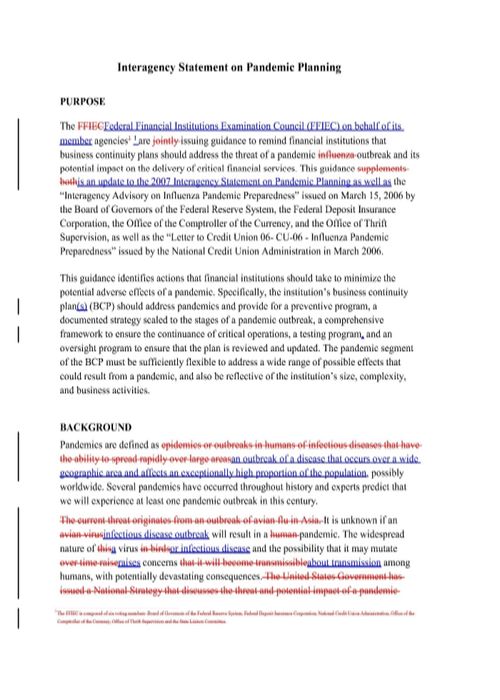
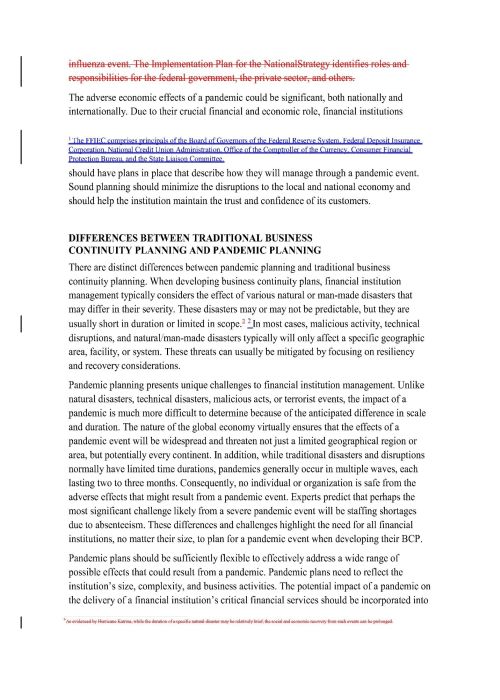
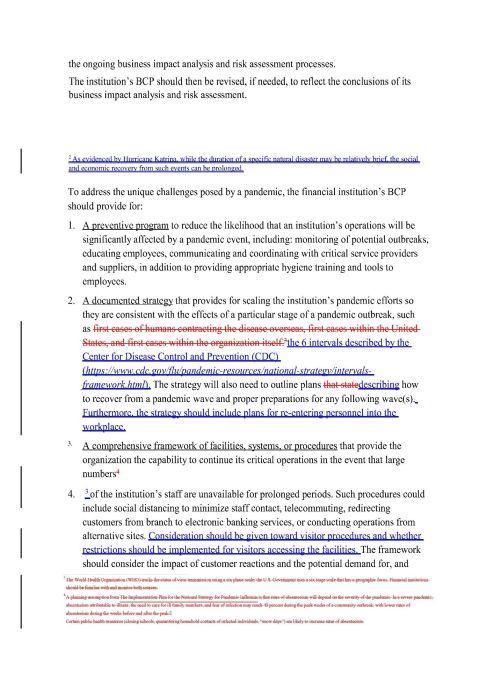
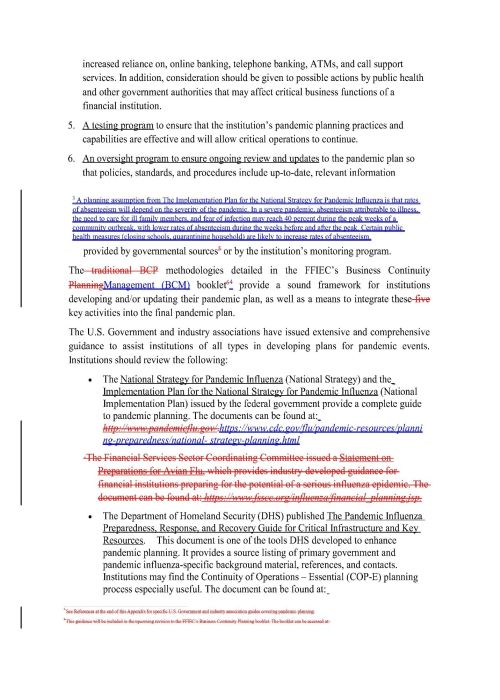
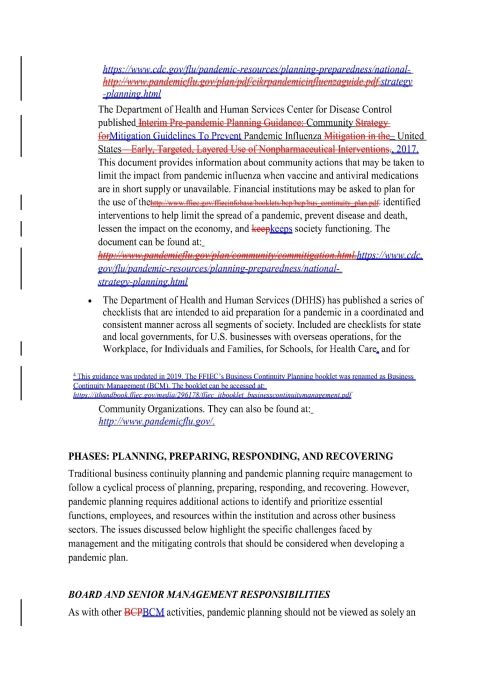
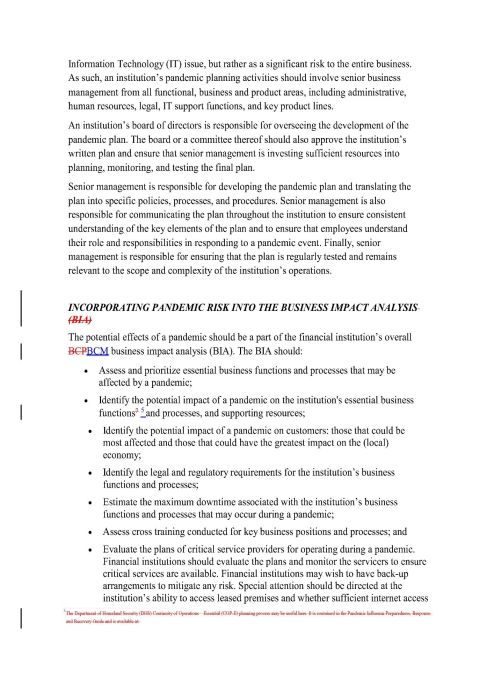
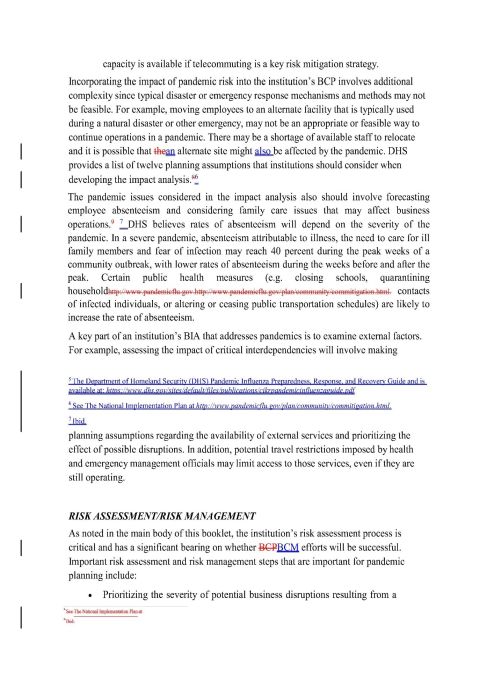
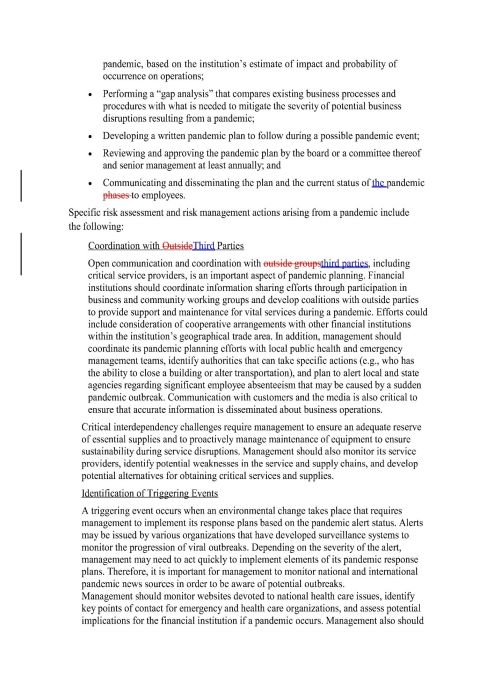
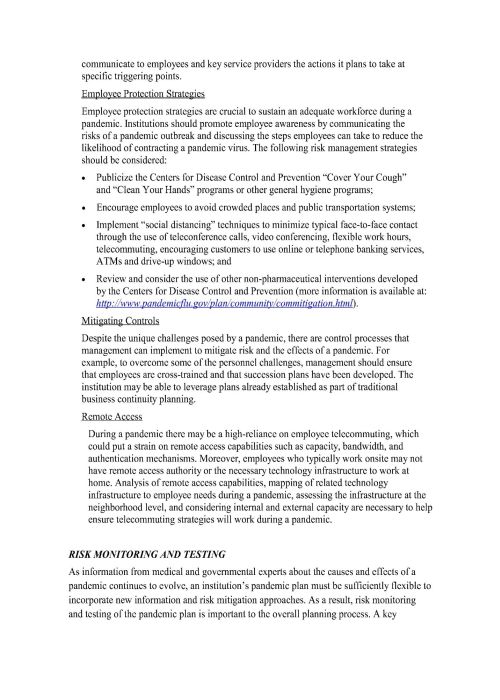
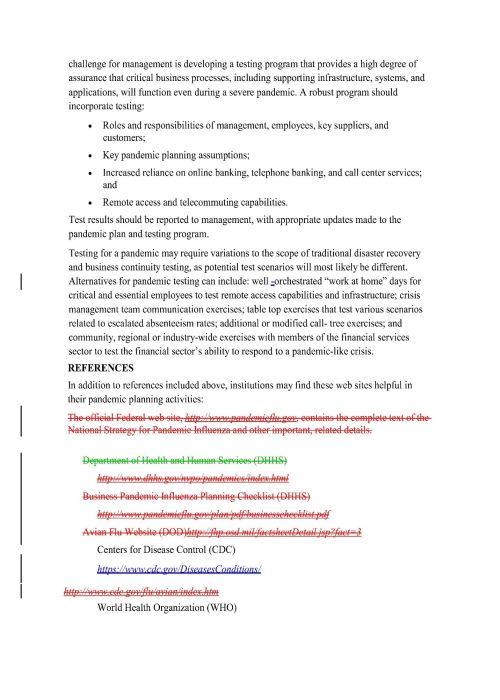
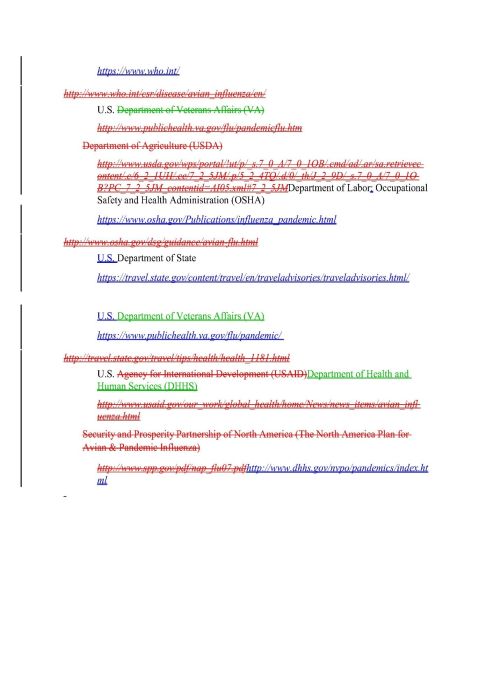
Footnotes
1 FFIEC Highlights Pandemic Preparedness Guidance (Mar. 6, 2020), https://www.ffiec.gov/press/pr030620.htm. The US federal banking regulators are the Office of the Comptroller of the Currency ("OCC"), Board of Governors of the Federal Reserve System ("Federal Reserve"), Federal Deposit Insurance Corporation ("FDIC"),
2 NYDFS, Ltr. on Operational Preparedness Relating to the Outbreak of the Novel Coronavirus (Mar. 10, 2020), https://dfs.ny.gov/industry_guidance/industry_letters/il20200310_risk_coronavirus; NYDFS, Ltr. on Potential Financial Risk Arising from the Outbreak of the Novel Coronavirus (Mar. 10, 2020), https://dfs.ny.gov/industry_guidance/industry_letters/il20200310_financial_risk_coronavirus; NYDFS, Ltr. on Virtual Currency Business Activity (Mar. 10, 2020), https://dfs.ny.gov/industry_guidance/industry_letters/il20200310_coronavirus_vc_business_oper_fin_risk.
3 FFIEC Releases Guidance on Pandemic Planning (Dec. 12, 2007), https://www.ffiec.gov/press/pr121207.htm.
Visit us at mayerbrown.com
Mayer Brown is a global legal services provider comprising legal practices that are separate entities (the "Mayer Brown Practices"). The Mayer Brown Practices are: Mayer Brown LLP and Mayer Brown Europe – Brussels LLP, both limited liability partnerships established in Illinois USA; Mayer Brown International LLP, a limited liability partnership incorporated in England and Wales (authorized and regulated by the Solicitors Regulation Authority and registered in England and Wales number OC 303359); Mayer Brown, a SELAS established in France; Mayer Brown JSM, a Hong Kong partnership and its associated entities in Asia; and Tauil & Chequer Advogados, a Brazilian law partnership with which Mayer Brown is associated. "Mayer Brown" and the Mayer Brown logo are the trademarks of the Mayer Brown Practices in their respective jurisdictions.
© Copyright 2020. The Mayer Brown Practices. All rights reserved.
This Mayer Brown article provides information and comments on legal issues and developments of interest. The foregoing is not a comprehensive treatment of the subject matter covered and is not intended to provide legal advice. Readers should seek specific legal advice before taking any action with respect to the matters discussed herein.


